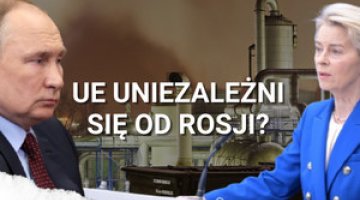Concept for the development of hydrogen energy in Russia
On 5 August, the government of the Russian Federation (FR) approved its Concept for the development of hydrogen energy in Russia. The document is quite general in nature, but it does allow us to determine the main interests and directions of the Russian government’s planned activities in this field. The Concept testifies to the growing awareness in the country of the inevitability of the ongoing global energy transformation and the need to counteract the marginalisation of Russia’s role in the global energy market. The Russian Federation’s strategic goal for the development of hydrogen energy is to make the country one of the leading producers and exporters of this energy carrier. Moreover, the Kremlin plans to become involved in the creation of the regulations for the operation of the global hydrogen market, to ensure they will be consistent with Russian interests; however, the document as accepted does not say how the country intends to achieve these goals.
Objectives of Russian hydrogen policy
The global energy transformation that has been underway in recent years as a response to climate change has de facto forced the Kremlin to focus on hydrogen energy. As a result, at the end of 2019 work began on the Russian Federation’s national strategy for hydrogen energy (it is still unclear when it will be formally adopted). One of the first results of this work is the Concept for the development of hydrogen energy in Russia, which has just been approved in recent days.
Among other things, the document highlights a projected increase in demand for hydrogen in the EU and Asian countries, which Russian production could meet to a great degree. The country has considerable production and export potential for this energy carrier (for reasons including its significant resource base, its experience in the use of hydrogen technologies, and its geographical location close to the target markets), meaning that Russia could become an important producer and exporter of hydrogen. In addition, developing and implementing its own hydrogen technologies should keep its economy competitive.
The Kremlin also intends to actively participate in the formation of the global hydrogen market, primarily by co-creating the regulations for its operation; these will include the global classification of hydrogen types on the basis of their carbon footprint, the certification system, and the assessment of the hydrogen life cycle depending on the methods of its production, transport and use. Russia believes that the goal of the global low-carbon economy should be to produce and use hydrogen with low CO2 emissions based on fossil fuels (especially natural gas), nuclear energy and renewable energy sources. The main criterion for assessing the impact of hydrogen energy on the climate should be the volume of CO2 emissions (the carbon footprint) during the full lifecycle of hydrogen.
Stages of development of hydrogen energy
The concept adopted assumes the development of hydrogen energy in Russia over three phases.
- In the first one (2021-24), at least three scientific and industrial hydrogen clusters will be established in the Russian Federation: the North-West, targeted at exporting hydrogen to the EU and reducing the carbon footprint of Russian production for the foreign market, in reaction to Brussels’ plans to introduce a carbon border tax; the East, targeted at exporting hydrogen to Asian countries and developing transport infrastructure, together with technologies to allow the use of hydrogen in industry; and the Arctic, oriented at creating low-emission energy supply systems in the Russian Arctic (and using them to replace the supplies of fossil fuels to the region) and (or) exporting hydrogen and hydrogen-based mixtures.
During this time, pilot projects will also be implemented, allowing for the export of hydrogen (up to 200,000 tonnes by 2024) and technologies enabling its use on the domestic market will be developed. At the same time, principles for state support of the industry and legal regulations concerning it will be developed. Initially, Russia plans to focus on devising technologies to obtain hydrogen from fossil fuels, and on capturing and storing carbon dioxide. This is because, as the document states, green hydrogen obtained from renewable sources will most likely only become price-competitive around 2050. - In the second stage (2025–35), the first commercial projects to produce hydrogen obtained mainly from natural gas and nuclear energy will be launched, thanks to which exports of hydrogen will rise to 2 million tonnes by 2035 (the most optimistic target is 12 million tonnes). There are also plans to pilot the use of hydrogen technologies on the domestic market in various sectors of the economy (including oil, chemical, electricity, metallurgy and transport), and to export Russian hydrogen technologies.
- The third stage (2036–50) assumes the mass-scale use of hydrogen in the global energy sector, with the costs of producing green hydrogen approaching those generated by obtaining it from fossil fuels. As a result, exports may increase to 15 million tonnes (the optimistic variant foresees 50 million tonnes), which will also include hydrogen from renewable sources. Russia could then become one of the largest exporters of hydrogen technologies, and of hydrogen and mixtures based on it, to the EU and Asian markets. Hydrogen could also be used on a mass scale on the domestic market, especially in transport, power and industry.
Challenges for the development of hydrogen energy in Russia
Until now, the Kremlin and the Russian companies have had little interest in hydrogen energy, largely due to their reluctance to change the current order of the energy market. Moscow has not been particularly enthusiastic about implementing climate policy; this is because, inter alia, the reduction in the level of greenhouse gas emissions that Russia has agreed to is exceptionally favourable to it (in fact, it even allows for an increase in emissions in the coming decades). In addition, Russian electricity generation leaves a relatively small carbon footprint (it is mainly produced from native gas, nuclear and hydroelectric power), so increasing the use of renewable energy sources (RESs) or hydrogen is not a priority for the government. This was confirmed in the Russian Federation’s Energy Strategy to 2035, adopted in 2020; it focuses on the traditional sectors of domestic energy production (oil, gas, petrochemical, etc.), while the use of hydrogen is marginalised, similar to the RESs which are essential to the production of zero-emission hydrogen. (It is assumed that RESs will not exceed 1% of electrical energy production in Russia in 2035.)
Moscow perceives the global processes of energy transformation currently taking place as a serious threat to its fuel and energy sector, which is emphasised in the Concept for the development of hydrogen energy in Russia. These changes will slow down global demand for fossil fuels, change the structure of that demand due to the rising importance of renewable energy sources, and increase competition on international markets as new producers emerge. The Kremlin sees the growing demands for low-emission generation and the development of the legal basis for this field (including the introduction of carbon border taxes) as a pretext to justify discrimination against Russian companies on global markets.
One particularly serious challenge for the development of hydrogen energy is finding funding for investments that will only pay off in the long term. However, the document does not estimate the size of the capital expenditure which will be needed, nor does it indicate where potential sources of this funding might come from. Likewise, it remains unclear what form state support for hydrogen projects will take. Considering the currently unattractive investment climate in Russia, the overall level of corruption, the absence of guarantees of property rights, and the technological lags in many areas, it is hard to imagine that private companies will be ready to take on the burden of carrying out these projects. Additionally, investments in hydrogen energy are innately more risky, due to the highly uncertain prospects for development in this sector of the economy. Forecasts regarding the increase in demand for this energy carrier are very varied. Depending on the degree to which the ambitious assumptions of climate policy in the EU and in selected Asian countries are actually implemented, the global hydrogen market may expand from the current level of 70 million tonnes to 200 million tonnes by 2050; and in the most optimistic variant, even up to 1.5 billion tonnes (according to Russian estimates, however, growth will not exceed 200 million tonnes).
The international hydrogen energy cooperation in which Russian companies participate is currently very modest. Two Russian companies, Gazprom and Rosatom, are most interested in developing projects in this sector. The planned volumes of domestic hydrogen exports (0.2 million tonnes in 2024; 2 million in 2035; 15 million in 2050) are not very ambitious. Russia’s position on the global hydrogen market will be quite limited, especially considering that this market will only reveal its true shape over the coming years. As a result, the Kremlin may have serious problems pushing through its interests. This applies in particular to the export of low-emission hydrogen based on gas or nuclear energy, which the European Union sees as just a temporary solution: ultimately, the plan is for only zero-emission hydrogen (produced with the use of RESs) to be used. For Russia, which has its own resources of traditional raw materials, the idea of giving up their use is unacceptable.





